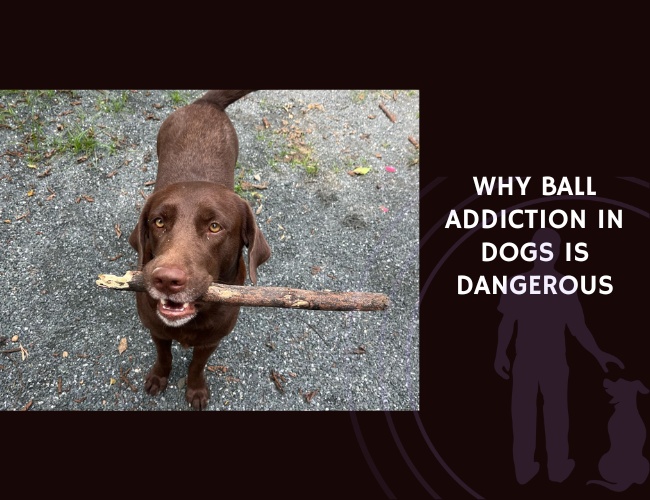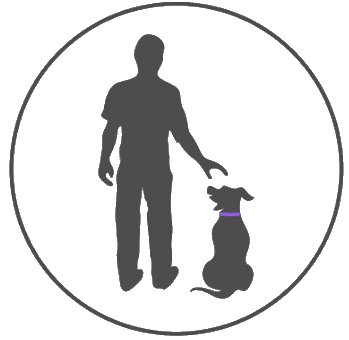Introduction to Ball Obsession
Understanding ball obsession in dogs is crucial for ensuring their overall well-being. This chapter delves into the definition of compulsive fetch behavior, the distinction between healthy play and obsessive behavior, and common signs of ball addiction in dogs.
Definition of Compulsive Fetch Behavior
Compulsive fetch behavior in dogs can be defined as an uncontrollable and repetitive urge to engage in fetch activities, often to the point where it interferes with the dog’s normal functioning and daily life. Unlike healthy fetch play, which is enjoyable and helps foster the bond between dog and owner, compulsive fetch behavior becomes an obsession where the dog constantly seeks opportunities to play fetch and exhibits distress when unable to do so.
Distinction Between Healthy Play and Obsessive Behavior
It’s important to distinguish between healthy play and obsessive behavior to ensure your dog maintains a balanced lifestyle. Healthy play involves:
- Moderation: Dogs enjoy the game of fetch without showing signs of distress when it ends.
- Variety: The dog engages in various activities, not just fetch.
- Responsiveness: The dog is still attentive to the owner and other environmental stimuli during and after play.
Obsessive behavior, on the other hand, presents itself in ways that indicate compulsion:
- Persistence: The dog relentlessly demands to play fetch, often ignoring commands or other activities.
- Single-minded focus: Fetch becomes the primary, if not sole, activity of interest to the dog.
- Distress: The dog shows signs of anxiety or agitation when fetch play is denied or interrupted.
Common Signs of Ball Addiction in Dogs
Recognizing the signs of ball addiction early can help in addressing and mitigating the behavior. Common signs include:
- Constant focus on the ball: The dog fixates on where the ball is kept or continuously stares at the ball when it’s in sight.
- Excessive energy: The dog displays heightened excitement and energy levels at the sight of a ball, often to the point of becoming uncontrollable.
- Physical symptoms: The dog may exhibit tense body language, such as pulled back lips and glassy eyes, while engaged in or anticipating fetch play.
- Ignoring other stimuli: The dog becomes unresponsive to external cues or commands when focused on playing fetch.
- Restlessness: When the ball is not available, the dog may become restless, pacing, whining, or engaging in substitute behaviors, such as chewing or digging.
It is essential to observe these signs and take steps to modify the behavior early on. Addressing ball addiction can help ensure that your dog remains happy, healthy, and well-balanced.
By understanding the definition of compulsive fetch behavior, the distinction between healthy and obsessive play, and recognizing the signs of ball addiction in dogs, we can better manage and support our furry friends. Up next, we will explore the biochemical response in dogs during intense fetch sessions and how these responses are similar to drug addiction patterns.
The Biochemical Response
When your dog plays fetch, especially in an intense or compulsive manner, a fascinating series of physiological events unfolds. This chapter will delve into the biochemical response that occurs during these sessions, highlighting the release of endorphins, serotonin, and noradrenaline and their roles in creating addiction-like patterns in dogs.
Release of Neurotransmitters
Just like humans, dogs experience a powerful rush of “feel-good” chemicals when they engage in highly stimulating activities like playing fetch. These chemicals include:
- Endorphins: These are natural painkillers produced by the central nervous system and the pituitary gland. During intense fetch sessions, the dog’s body releases endorphins that help in reducing pain and creating a feeling of euphoria.
- Serotonin: Often referred to as the “happiness hormone,” serotonin contributes to an overall sense of well-being. It plays a role in mood regulation, appetite, and sleep.
- Noradrenaline: This neurotransmitter, also known as norepinephrine, acts as both a stress hormone and a neurotransmitter. It increases arousal and alertness, preparing the body for action.
The combined effect of these neurotransmitters can make fetch feel incredibly rewarding and compelling for your dog.
Comparison to Drug-Like Addiction
Interestingly, the release of these neurotransmitters during fetch is quite similar to the patterns seen in addiction. When a dog fetches a ball, it’s not just about the physical act but also the biochemical reward. Here’s how it draws parallels to drug addiction:
- Dopamine Pathways: Like drugs that flood the brain with dopamine, an intense game of fetch does something similar. This dopamine surge reinforces the behavior, making it more likely that the dog will want to repeat the action.
- Craving and Withdrawal: With repeated fetch sessions, dogs may develop a strong craving for the euphoria they experience, similar to how addicts crave their next fix. When deprived of this activity, they can exhibit signs of withdrawal, such as restlessness and irritability.
This striking similarity highlights why some dogs can become almost desperate for their next game of fetch. Once addicted, it becomes extremely challenging to break the cycle without professional intervention.
Physiological Stress Responses
While fetch can be exhilarating for your dog, it can also induce significant physiological stress responses, creating a challenging dichotomy between pleasure and harm. These stress responses include:
- Elevated Heart Rate: During an intense fetch session, your dog’s heart rate can increase significantly. While this might be fine in moderation, constant elevation can strain their cardiovascular system over time.
- Adrenaline Surge: The relentless pursuit of the ball spikes adrenaline levels. Though initially energizing, chronic elevation in adrenaline can lead to health issues such as high blood pressure and weakened immune function.
- Muscle Tension: The physical exertion needed for repeated sprinting, jumping, and retrieving can create excessive muscle tension, leading to soreness and injury if the dog is not adequately conditioned or given time to recover.
Understanding these stress responses is crucial for recognizing the fine line between healthy play and behavior that could potentially harm your dog’s well-being. In recognizing these responses, it’s essential to incorporate balanced and diverse activities into your dog’s routine.
By exploring the complex biochemical landscape of compulsive fetch behavior, we come to appreciate the significant impact this activity can have on a dog’s physiological and mental health. As responsible pet owners, understanding these dynamics allows us to make more informed choices, promoting healthier and more balanced lifestyles for our furry companions.
The next important consideration in maintaining our dogs’ health and well-being involves recognizing the physical and behavioral signs of ball obsession. By observing these signs, we can take proactive measures to mitigate the risks associated with compulsive fetch behavior.
Physical and Behavioral Signs
Just as the biochemical responses in a dog’s body during intense fetch sessions mirror drug-like addiction patterns, physical and behavioral signs can similarly indicate the onset of compulsive fetch behavior. Recognizing these signs ensures we can intervene promptly and protect our dogs from potential health risks.
Observable Changes in Behavior
When a dog engages in obsessive fetch behavior, some distinct physical and behavioral changes become apparent:
- Tense Movements: A dog might exhibit rigid and focused movements while waiting for the ball to be thrown, indicative of heightened anticipation and stress.
- Pulled Back Lips: As the game progresses, a dog’s lips may be pulled back, revealing its teeth. This could be a signal of stress or overexcitement.
- Glassy Eyes: Another tell-tale sign is the dog’s eyes appearing glassy or unfocused. This indicates an intense concentration on the ball, often to the exclusion of everything else around them.
These signs can help distinguish between a dog enjoying healthy play versus one spiraling into an obsessive cycle.
Reduced Responsiveness to External Stimuli
A crucial aspect of compulsive fetch behavior is the dog’s reduced awareness of its surroundings. Here’s what you might notice:
- Ignorance of Commands: During an intense fetch session, your dog may start ignoring basic commands such as “sit,” “stay,” or “come,” showing its fixation on the ball.
- Unawareness of Environment: The dog might not react to other stimuli, including other dogs, people, or potential hazards. A sudden loud noise or distraction that would typically draw any dog’s attention might be neglected entirely.
Such fixation is a red flag signaling that the dog’s attention span and responsiveness are compromised, which could be dangerous in unpredictable environments.
Increased Physical Strain
Physiological stress responses are not just limited to increased neurotransmitter levels; they manifest physically as well:

Elevated Heart Rate and Respiration
One of the immediate responses is an elevated heart rate and faster breathing. While this might be normal during exercise, prolonged periods of stress can strain the cardiovascular system.
Muscle Tension and Fatigue
Continuous fetching and retrieving can lead to muscle tension and fatigue. Overworked muscles without adequate rest and recovery can lead to injury and long-term joint problems.
Signs of Overexertion
Look out for signs such as excessive panting, drooling, or the dog appearing unusually tired or sluggish after play. These could indicate that the physical demands are surpassing the dog’s limits.
By understanding these physical and behavioral signs, dog owners can monitor play sessions and intervene before the behavior becomes harmful.
Transition to Next Topic
Through these observations, it’s evident that compulsive fetch behavior has serious implications. It’s essential to be aware of these signs to avoid long-term consequences for your dog’s health and well-being. Like any other destructive habit, finding healthier alternatives and maintaining a balanced approach to play is crucial.
By recognizing these physical and behavioral indicators, we take the first step in managing our dogs’ well-being effectively.
Negative Consequences
Understanding the negative consequences of ball addiction in dogs is essential to ensure their overall well-being. When ball play becomes unavailable, dogs with compulsive fetch behavior can develop replacement behaviors, exhibit aggressive tendencies, and suffer from long-term physical and mental health issues.
Development of Replacement Behaviors
When compulsive fetch behavior is left unchecked and the primary source of the activity (ball play) becomes unavailable, dogs often develop replacement behaviors. These substitute behaviors can include:
- Chewing on Objects: Dogs may redirect their energy and anxiety towards destructive chewing on furniture, shoes, or other household items.
- Excessive Barking: The pent-up frustration could lead to constant barking, which can be disruptive to both the household and neighbors.
- Digging: Dogs might take to digging holes in the yard as an outlet for their unspent energy and obsession.
These replacement behaviors are usually indicative of a dog’s need for mental and physical stimulation that they used to get from playing fetch.
Risk of Aggressive or Dangerous Behavior
Compulsive fetch behavior can condition dogs to react aggressively towards any moving object, a relic of their strong prey drive. This can be dangerous for several reasons:
- Chasing Vehicles: Dogs might chase after cars or bikes, leading to potential traffic accidents and severe injuries.
- Aggression Towards People or Animals: They could become aggressive towards people joggers, cyclists, or other animals, interpreting them as “prey” or “targets” for their obsessive chase.
- Resource Guarding: Dogs might begin to guard balls and other objects fiercely which can escalate into growling, snapping, or biting when approached.
Addressing these risks early is crucial to prevent possible harm to the dog and those around it.
Long-Term Impact on Physical and Mental Well-Being
The extensive long-term impact of compulsive fetch behavior on a dog’s physical and mental well-being can be profound. Physically, the relentless pursuit of a ball can lead to:
- Joint and Muscle Injuries: Repeated jumping, running, and sudden stops can cause stress on a dog’s joints and muscles, leading to injuries like strains and sprains.
- Exhaustion: Continuous vigorous exercise without breaks can lead to heat exhaustion or dehydration, especially in hot weather or for breeds susceptible to overheating.
Mentally, the dog’s well-being can deteriorate as well:
- Anxiety: The compulsive need for the ball can lead to heightened levels of anxiety whenever the ball is not in sight or reach, disrupting the dog’s ability to relax.
- Obsessive-Compulsive Disorder (OCD): The behavior might evolve into an obsessive-compulsive disorder, making it challenging for the dog to focus on other activities or rest properly.
- Depressive Behavior: Over time, the constant state of stimulation and lack of fulfillment without the ball can result in depressive-like symptoms.
To counteract these harmful effects, a balanced approach to play and activity, including mental stimulation and varied exercises, is necessary for maintaining a dog’s health.
Recognizing these negative consequences and addressing them appropriately is fundamental to ensuring the well-being of a dog with compulsive fetch tendencies.
Alternative Activities
After understanding the negative consequences of ball obsession, it’s crucial to explore healthier alternatives for keeping your dog active and engaged. By introducing varied activities, you can help your dog burn energy without falling into unhealthy patterns.
Healthy Alternatives to Compulsive Ball Play
It’s important to offer your dog a range of activities that promote physical exercise and mental stimulation. Here are some ideas to get you started:
- Tug of War: This game is a great way to engage your dog physically, and it can be a fun bonding activity. Just ensure you follow the rules to avoid encouraging aggressive behavior.
- Hide and Seek: Teach your dog to stay while you hide somewhere in the house or yard, then call them to find you. It’s mentally stimulating and reinforces basic commands.
- Puzzle Toys: Invest in some puzzle toys that dispense treats. These toys engage your dog’s mind and keep them occupied for long periods.
- Scent Work: Dogs have an incredible sense of smell. Hiding treats around the house or yard and encouraging your dog to find them can be incredibly stimulating and satisfying for them.
- Fetch Alternatives: Instead of traditional fetch, consider games that incorporate elements of fetch with added challenges, such as fetching a toy that requires paw or nose work to release a treat.
Structured Training Activities That Promote Mental Stimulation
Training doesn’t only create a well-behaved pet; it provides crucial mental exercise for your dog. Structured training sessions can make a huge difference:
- Obedience Training: Basic commands such as sit, stay, and come can be practiced regularly. Incorporating new commands or tricks keeps your dog mentally engaged.
- Agility Training: Setting up a small agility course in your backyard or joining a local agility class can provide your dog with both physical and mental stimulation. Navigating obstacles requires focus and coordination.
- Clicker Training: This positive reinforcement method is an excellent way to teach your dog new tricks and behaviors. The process of learning and receiving rewards keeps their brain active.
- Interactive Play: Engage in interactive games that require your dog to think, like playing with toys that have hidden compartments or using commands to engage them in doing chores like picking up their toys.
Balanced Approach to Play and Exercise
Balance is the key to maintaining your dog’s well-being. A combination of physical exercise, mental stimulation, and downtime is essential:
- Routine: Establishing a regular schedule for walks, playtime, and feeding can help reduce anxiety and create a sense of stability for your dog.
- Mix it Up: Varying activities, walks in different locations, and meeting new canine friends can keep things interesting and prevent the onset of obsessive behaviors.
- Rest: Ensure your dog has plenty of time to rest and relax. Overworking your dog physically or mentally can lead to stress and exhaustion.
- Supervision: Always supervise playtime to ensure it remains positive and safe, especially when introducing new activities. Be mindful of your dog’s physical limits and watch for signs of overexertion.
By incorporating these alternative activities and adopting a balanced approach to their routine, you can help your dog lead a happier, healthier life without the risks associated with compulsive fetch behavior.



